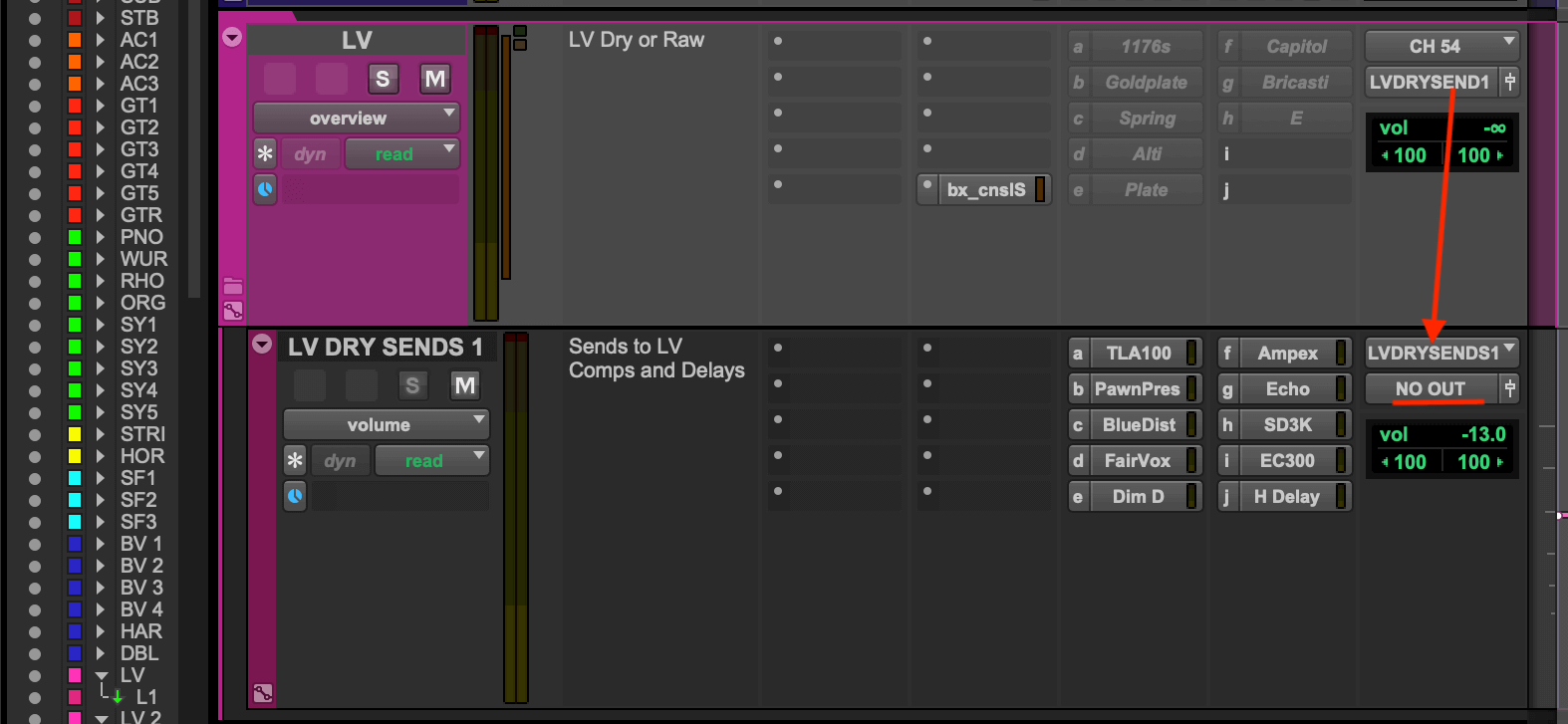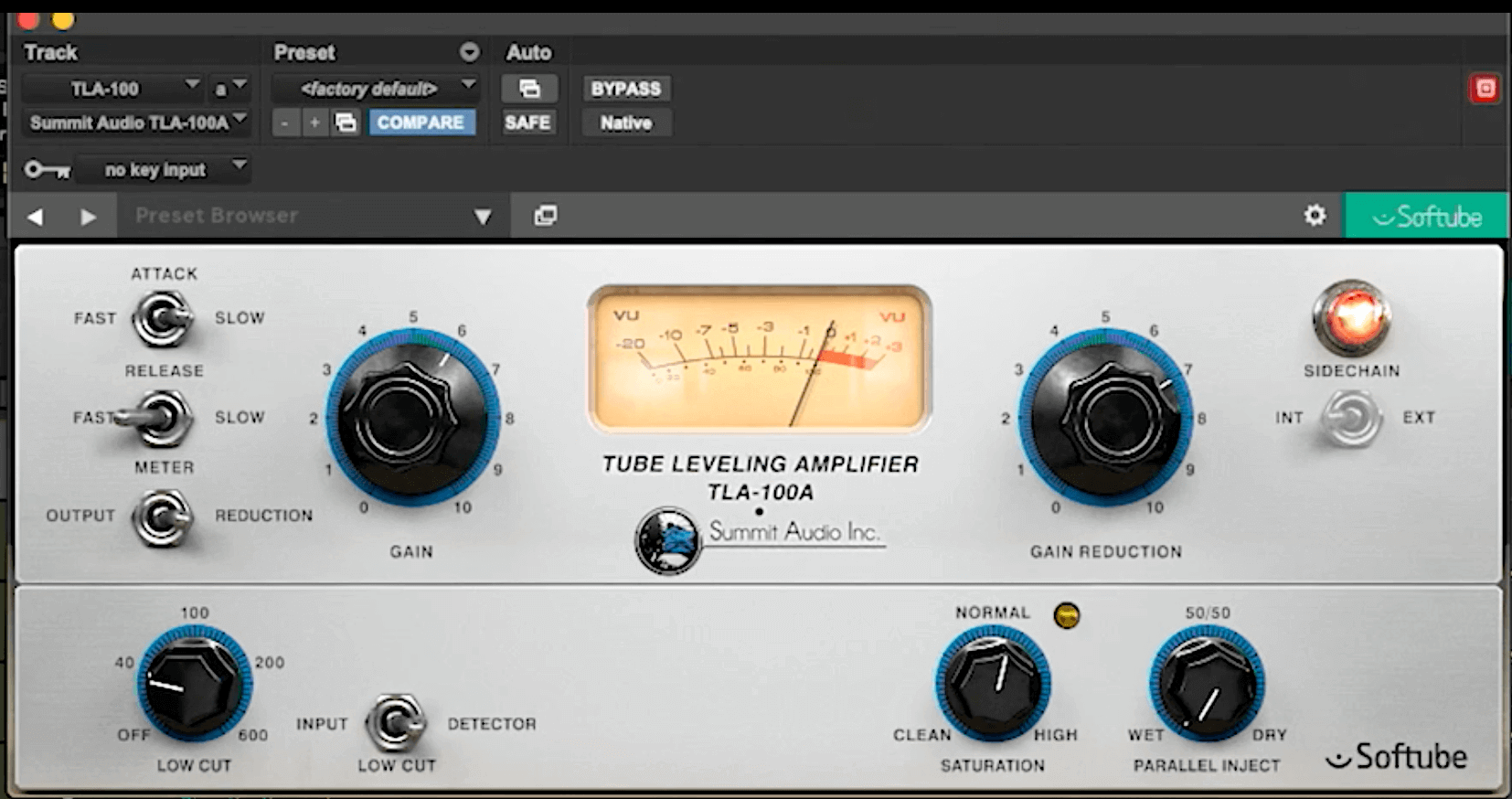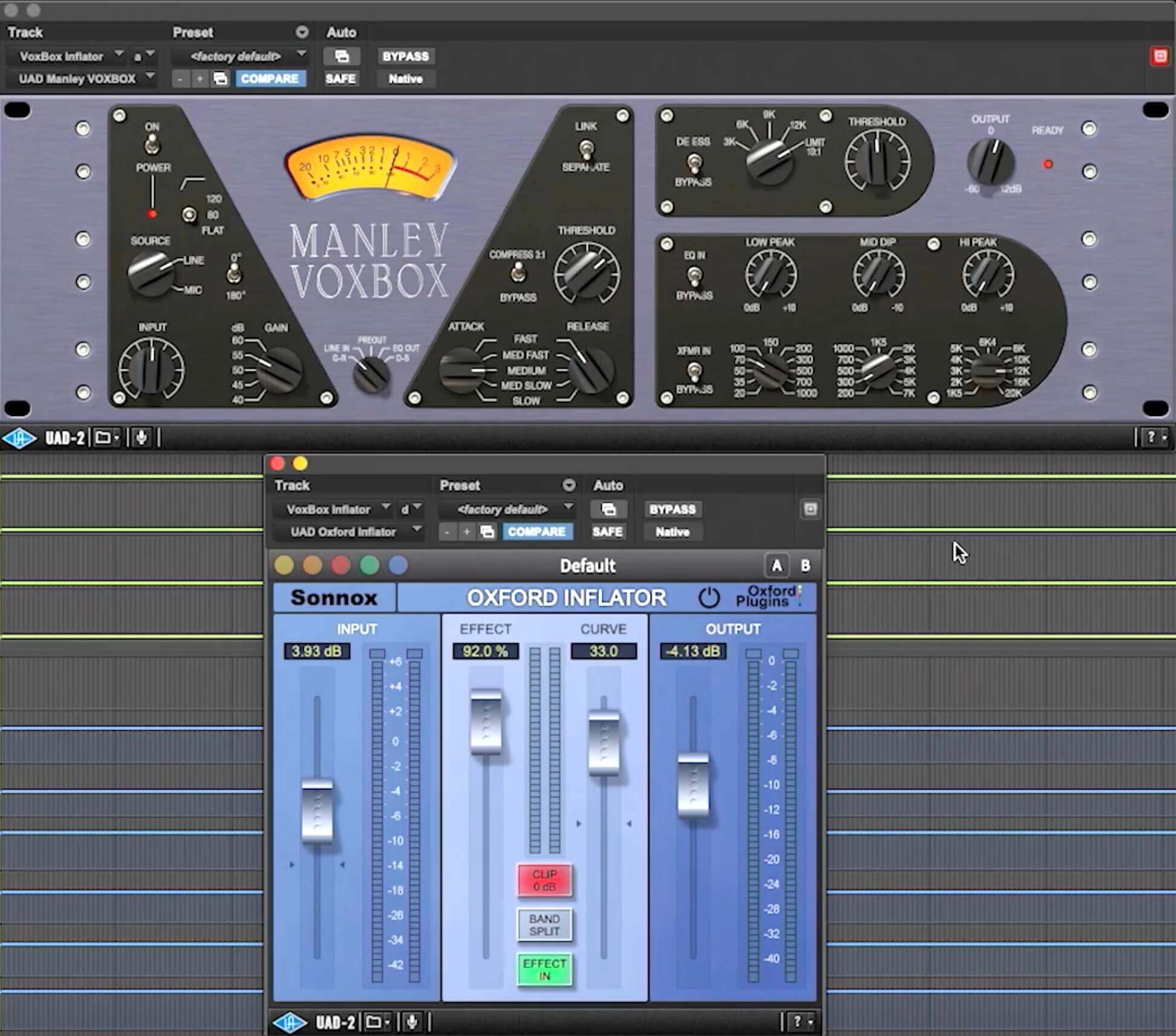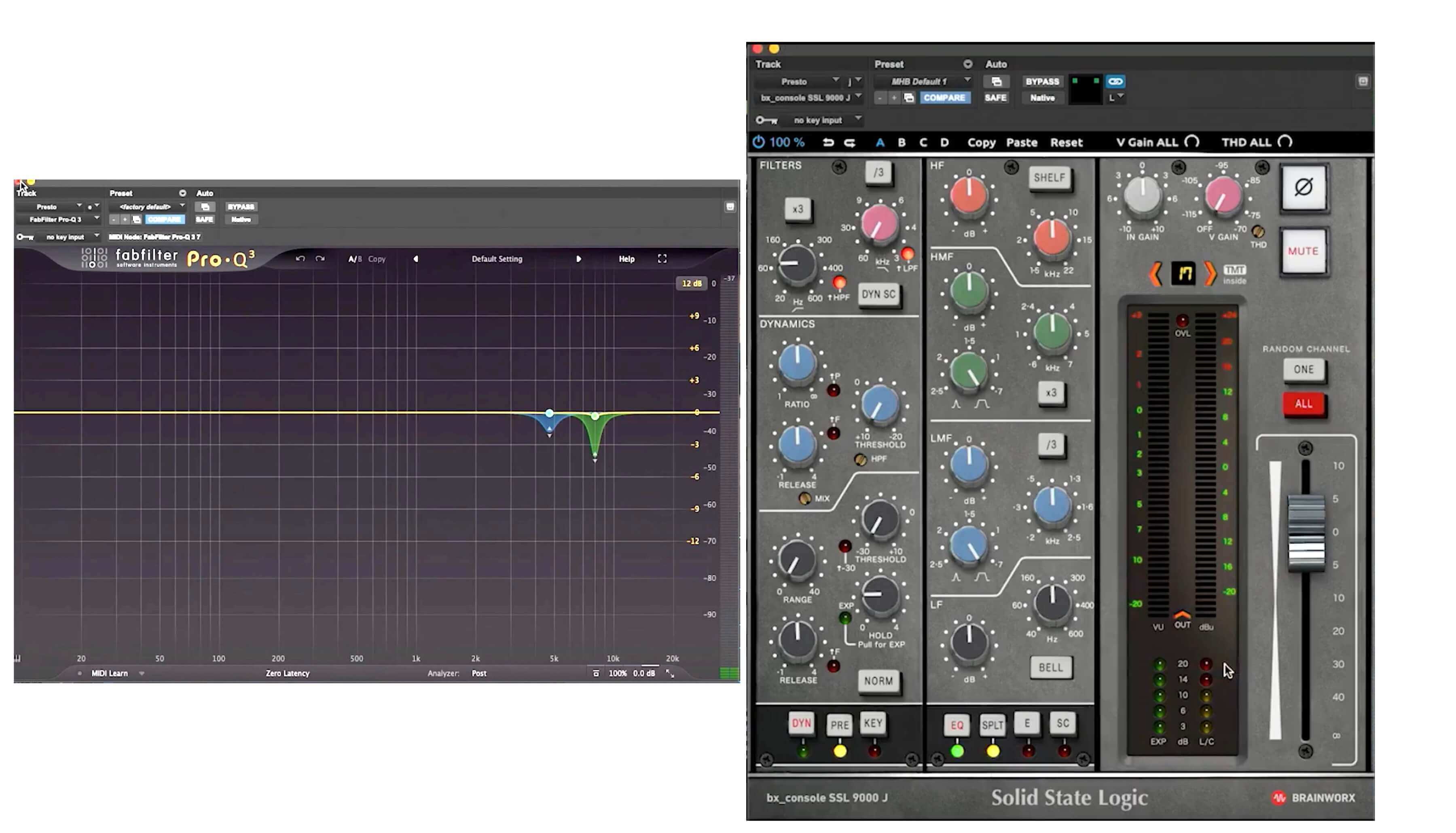Michael Brauer is one of the world’s elite mix engineers. His “Brauerize©” technique for mixing into multiple parallel compressors is unique and powerful. He originally developed it while working on an SSL console but has successfully translated it to “in-the-box” mixing. In this excerpt from Michael Brauer The Evolution From Analog to Digital "Brauerize”©, he discusses the genesis of his technique and gives a brief synopsis of how it works when applied to lead vocals.
In this article, we’ll examine his vocal compression approach in detail. If you’re a Puremix member, you can watch the full video to hear Michael and his assistant engineer, Fernando Reyes, explain it. Members can also download Michael’s Pro Tools session template.
The Float
With vocals, the key to Michael’s technique is mixing into a collection of post-fader parallel compressor plugins, each with a different tonal signature.
From its original track (where it was recorded or imported into Pro Tools), the lead vocal gets routed into a Folder Track named LV (which stands for Lead Vocal). For those unfamiliar, a Folder Track in Pro Tools acts like a container for multiple tracks. You can control its volume and routing and add inserts or sends.

Some of the tracks in Michael’s session template.
The LV track’s output feeds a single aux track called Lead Vocal Dry Send 1 (LVD1). Fernando describes LVD1 as a “utility track” because its output is turned off, and it’s used to bus the vocal to the various individual compressors and, separately, to several delays.
Conventional parallel compression entails creating a heavily compressed copy of the target track and adding enough of it into the mix to create the desired effect. Both the compressed track and the uncompressed original are sent to the mix bus.
On vocals, Michael’s version of it is different because the lead vocal is “floated.” That means it doesn’t go to the mix bus through its own track. It gets there exclusively through the outputs of the parallel compressors and those of the reverbs and delays.

The LV track is routed into LVD1, which has no output.
Before getting to those post-fader compressors, Michael applies some pre-fader compression to the vocal on the LV track, usually using a UAD LA-2A Gray compressor to control its dynamic range. If it’s too peaky, it can cause the post-compressors that come later to attenuate too much.
“I want to tone it down a little bit,” he says. “In general, I’m going to create the character of the vocal on the inserts. That tone sends to the other compressors. So all the other compressors are reacting to this tone. I’m just taming it.”
If the LA-2A is too warm for a particular song, he says he’ll use a UAD Neve 33609 instead for the pre-compression. Another insert on the LV track is a Plugin Alliance Brainworx SSL 4000E channel strip, which Michael uses for any EQ adjustments he wants to make before the vocal is sent to the parallel compressors.

Michael uses an LA-2A plugin for “pre-compression.”
The LV track also features sends to the various vocal reverbs and to an 1176. He says he uses the 1176 to add presence without making the vocal louder.
An beneficial side effect of Michael’s mix architecture is that the reverbs get fed by the dry vocal on the LV channel. As a result, they react to the signal before it gets sent to the post-compressors. “When the compressors are working and forming,” Michael explains, “they’re doing that separately from what the reverb is seeing. That’s what’s creating this beautiful depth.”
The Compressors
Let’s focus on the compressors that Michael mixes into. Each one is on a separate aux track and fed by a send on the LVD1 track. In the template, the lead vocal compressors are all in a Track Folder entitled “LV Compressors.”
Initially, all the sends on the LVD1 track are set to unity gain, but the compressors are all calibrated to have the same output level and set to reduce gain by about 1dB each.
Each compressor offers a different tonal quality that can be accentuated in a vocal, such as “head tone,” “throat,” and “chest.” By adjusting the relative levels between his four compressor sends, he can create the sound he wants. This is a critical aspect of his setup because it gives him supreme control over the tone and contours of the lead vocal.
Michael’s compressor lineup consists of eight plugins on seven tracks, fed by a total of four sends on the LV track. If those numbers sound confusing, it’s because one of the compressor channels (VoxBox Inflator) has two compressors on it, and three of the sends (PawnPr, BlueDist, and FairVx) feed two compressors each.

Looking at the inputs, you’ll see that only four sends are used for all seven compressor channels.
Here are brief descriptions of the lead vocal compressors in Michael’s template:
Softube Summit Audio TLA-100: This plugin models the warm, smooth, tube-based hardware version of the TLA-100.

Korneff Pawn Shop: An original digital compressor, Pawn Shop offers a more throaty and guttural-sounding compression.

Kazrog Powers Music Company Presto: The Presto plugin is another model of a hardware tube compressor. This one was from the 1960s and was initially made for radio but later modified for music production. Michael describes its compression as “lush-sounding.”

UAD 1176 Rev A (aka “Blue Stripe”): A model of one of the incarnations of the classic FET compressor, it provides character and energy. “It excites an unexcited vocal,” says Michael, who’ll sometimes set it to “All Buttons In.”

UAD Empirical Labs Distressor: Michael usually sets the Distressor plugin to “Nuke,” which applies the highest possible ratio. Like with the 1176, Michael uses the Distressor to add excitement. The Distressor channel also has a UAD Pultec EQP-1A plugin adding its unique tonal signature and a boost at 8kHz.

UAD Fairchild 660: An emulation of one of the all-time classic tube compressor/limiters, it provides head and chest tone and silkiness.

VoxBox Inflator: This one is actually two different compressors. A UAD Manley VoxBox and an Oxford Inflator. Michael touts the combination of the two for their clarity.

He says he always inserts an SSL 9000 J plugin on each of the parallel compressor channels. “I’m an SSL [person] through and through,” he says. “Just because I’m not on a console doesn’t mean I don’t want to continue hearing SSL in my head.”
He’ll often use the SSL 9000 J’s EQ to cut at about 300Hz to add clarity. He also sometimes attenuates at 3.8kHz. In addition, he often makes high-frequency cuts with a Fab Filter Q plugin, which he also inserts on each compressor channel.

On each compressor channel, Michael inserts a Fab Filter Pro Q3 and SSL 9000 J plugins.
Ride the Magic Fader
In addition to adjusting the balance of the parallel compressors, he spends time adjusting the level going into the LVD1 track. The higher he sets the LV fader, the more signal gets sent to the the LVD1 track. That, in turn, pushes the post-compressors harder.
He says there’s a sweet spot for setting the LV fader that he listens for—based on what’s going on in the rest of the song. When he pushes the compressors just the right amount, the sound will “bloom,” making it bigger and more full of character.